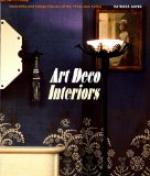The dressing-table should be constructed of material in harmony with the rest of your furniture. It may be of mahogany, walnut, rose wood, satin wood, or some painted variety, or, as is the fashion now, made of silk,—a seventeenth and eighteenth century style (in vogue during the time of the Louis). These are made of taffeta with lace covers on top, and in outline are exactly like the simple dotted-swiss dressing-tables with which every one is familiar,—the usual variety, so easily made by placing a wooden packing box on its side. In this case have your carpenter put shelves inside for boots, shoes and slippers. The entire top is covered with felt or flannel, over which is stretched silk or sateen, in any colour which may harmonise with the room. A flounce, as deep as the box is high, is made of the same material as the top, and tacked to the edges of the table-top. Cover the whole with dotted or plain swiss. A piece of glass, cut to exactly fit the top of the table, is a practical precaution. A large mirror, hung above yet resting on the table, is canopied in the old style, with the same material with which you cover your dressing-table.
If the table is made of the beautiful taffeta, now so popular for this purpose, as well as for curtains, it is, of course, not covered with swiss or lace, except the top, on which is used a fine, hand-made cover, of real lace and hand embroidery, in soft creams,—cream from age, or a judicious bath in weak tea. The glass top laid over this cover protects the lace.
If the table has drawers, each can be neatly covered with the taffeta, as can the frame of any table. A good, up-to-date cabinet-maker understands this work as so much of it is now done.
CHAPTER XXXII
THE TREATMENT OF CLOSETS
The modern architect turns out his closets so complete as to comfort and convenience, that he leaves but little to be done by the professional or amateur decorator. Each perfectly equipped bedroom suite calls for, at least, two closets: one supplied with hooks, padded hangers for coats, and covered hangers for skirts, if the closet is for a woman; or, if it is for a man, with such special requirements as he may desire. In the case of a woman’s suite, one closet should consist entirely of shelves. Paint all the closets to harmonise with the suite, and let the paint on the shelves have a second coat of enamel, so that they may be easily wiped off. Supply your shelves with large and small boxes for hats, blouses, laces, veils, etc., neatly covered with paper, or chintz, to harmonise with the room.
Those who dislike too many mirrors in a room may have full length mirrors on the inside of the closet doors.
Either devote certain shelves to your boots, shoes and slippers, or have a separate shallow closet for these-shallow because it is most convenient to have but one row on a shelf.




